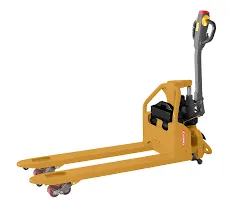


Understanding Anti-Fall Protection Importance and Implementation
In the modern workplace, ensuring safety and preventing accidents are paramount concerns for employers and employees alike. One critical aspect of this commitment to safety is the implementation of anti-fall protection systems. Falls are one of the leading causes of workplace injuries and fatalities, particularly in industries such as construction, manufacturing, and warehousing. This article explores the significance of anti-fall protection, types of systems available, and best practices for implementation.
The Significance of Anti-Fall Protection
The importance of anti-fall protection cannot be overstated. In the United States alone, falls account for a significant percentage of work-related injuries. The Occupational Safety and Health Administration (OSHA) reports that falls are responsible for more than 30% of all serious injuries in the workplace. By implementing effective anti-fall protection measures, employers can substantially reduce the risk of falls, thereby improving employee safety, enhancing productivity, and minimizing potential liabilities.
Types of Anti-Fall Protection Systems
Various types of anti-fall protection systems can be employed, depending on the specific risks of a job site. Here are some common types of systems
1. Guardrails These physical barriers are placed around elevated platforms, walkways, and other high-risk areas. Guardrails are designed to prevent unintentional falls and are typically required by safety regulations.
2. Personal Fall Arrest Systems (PFAS) These systems are worn by workers and consist of a harness, lanyard, and anchorage. PFAS is designed to catch a worker in the event of a fall, thereby minimizing the distance and energy of the fall.
3. Safety Nets Used in construction and other high-risk environments, safety nets are installed below elevated work areas to catch falling workers and debris, thereby preventing injury.
4. Fall Restraint Systems Unlike fall arrest systems, which stop a fall after it occurs, fall restraint systems are designed to prevent a worker from reaching an unprotected edge. These systems essentially keep workers from being exposed to fall hazards.

5. Lifelines Life lines are ropes or cables that provide a temporary connection for a worker's harness to a secure anchor point. They are commonly used in situations where workers are moving in different directions but remain at risk of falling.
Best Practices for Implementation
The effectiveness of anti-fall protection systems largely depends on their correct and consistent implementation. Here are some best practices
1. Risk Assessment Before implementing a fall protection system, conduct a thorough risk assessment of the worksite. Identify potential fall hazards and evaluate the risks associated with different job tasks.
2. Training and Awareness Proper training for employees is crucial. Workers must understand how to use fall protection equipment correctly and be aware of potential hazards. Regular safety training sessions can reinforce this knowledge.
3. Regular Inspections Conduct routine inspections of fall protection equipment and systems. Check for any signs of wear, damage, or malfunction. Regular maintenance is necessary to ensure that all systems function as intended.
4. Compliance with Regulations Familiarize yourself with local regulations and industry standards regarding fall protection. Compliance not only enhances workplace safety but also protects against legal ramifications.
5. Encouraging a Safety Culture Foster a culture of safety within the organization where all employees feel responsible for their safety and that of their colleagues. Encourage reporting of unsafe conditions without fear of reprisal.
Conclusion
Anti-fall protection systems are essential components of workplace safety protocols. By understanding their significance, types, and best practices for implementation, employers can create safer work environments for their employees. Investing in robust fall protection strategies not only reduces the incidence of workplace injuries but also contributes to enhanced productivity and operational efficiency. As safety continues to be a priority in the modern workforce, effective anti-fall protection should remain a key focus for all employers.



